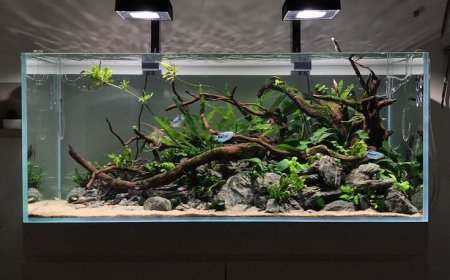Sample Tray for Efficient Coffee Evaluation

Introduction
In the intricate world of specialty coffee, quality control is not just a stepit is the cornerstone of excellence. Every stage of the supply chain, from sourcing to roasting, relies on precise tools to ensure consistency, traceability, and flavor development. Among the foundational tools in any cupping lab, quality control room, or green coffee evaluation facility is thesample tray.
A sample tray is more than just a container for beansit is a critical component of a professional workflow. It supports structured evaluation, categorization, and handling of green and roasted coffee samples. Whether used in sample roasting preparation, grading, or during cupping sessions, the sample tray ensures that coffee is organized, clearly labeled, and easily transportable. Its presence facilitates speed, reduces errors, and upholds the cleanliness and structure that define a professional lab environment.
This article dives deep into the world of sample traystheir types, materials, uses, and how they contribute to the accuracy of coffee analysis. We'll also highlight how Coffee Pro Direct produces sample trays that blend functionality with durability, trusted by cupping labs and coffee professionals worldwide.
What Is a Sample Tray?
A sample tray is a lab-grade container or shallow dish used to hold a coffee samplegreen or roastedduring grading, evaluation, or sample roasting. These trays are designed to accommodate specific quantities (usually 100g to 250g) and offer flat or contoured surfaces that allow visual inspection of beans for defects, size consistency, or preparation level.
In cupping labs or export facilities, sample trays are essential in organizing multiple lots of coffee. They often include labels or color coding to distinguish origin, lot number, processing method, or roast profile. When used properly, the sample tray becomes the anchor of a clean, accurate, and efficient evaluation workflow.
Why Sample Trays Matter in Coffee Evaluation
Precision and organization are everything in a cupping lab. Without clearly separated and labeled coffee samples, errors can easily creep into the evaluation process. Sample trays help maintain order and consistency while providing a professional presentation of green or roasted beans.
Key benefits include:
-
Organized Evaluation: Keep multiple coffee lots separated and identified
-
Efficient Handling: Easily transport samples to grinders, roasters, or cupping tables
-
Enhanced Visual Grading: Flat or curved surfaces show defects and size variation clearly
-
Professional Workflow: Helps maintain a clean, structured workspace
-
Supports Data Logging: Allows for label integration and sample tracking
By providing a standardized way to hold and view coffee samples, sample trays improve the integrity and repeatability of every evaluation.
Common Uses for Sample Trays
Sample trays are one of the most frequently used items in any quality-focused coffee lab. Their functionality spans several key tasks in the lifecycle of coffee analysis.
Key applications:
-
Green Coffee Grading: Visual inspection of screen size, shape, color, and defects
-
Sample Roasting Prep: Holding green coffee before and after moisture testing
-
Cupping Sessions: Presenting roasted coffee lots before and after grinding
-
Export Sample Sorting: Organizing lots for review, approval, or sample shipping
-
Education and Training: Used in Q Grader courses and sensory workshops
Sample trays help keep every step of the cupping and QC process organized and standardized, especially when working with multiple samples at once.
Types of Sample Trays in Coffee Labs
There are a few different forms of sample trays, each serving slightly different purposes depending on the stage of evaluation or the environment in which they are used.
1. Flat Sample Trays
These trays feature a flat surface ideal for visual inspections and sample comparison.
-
Pros: Clear visibility, good for defect grading
-
Best for: Green coffee grading and comparison
2. Curved or Ribbed Trays
With contoured interiors, these help collect beans in the center and reduce spillage.
-
Pros: Easier to handle, stackable, commonly used in cupping
-
Best for: Roasted coffee cupping presentations
3. Divided Trays
Feature multiple compartments to compare two or more lots side by side.
-
Pros: Convenient for side-by-side comparisons
-
Best for: Sample testing, education, flavor triangulation
4. Color-Coded Trays
Available in multiple colors for easier tracking of origins, processing methods, or roast levels.
-
Pros: Fast identification, helpful in high-volume labs
-
Best for: Roasteries, cooperatives, exporters
5. Stackable Trays
Designed to save space in busy labs, these trays nest on top of one another when not in use.
-
Pros: Lab-efficient, easy storage
-
Best for: Sample-heavy environments and mobile setups
Ideal Materials for Sample Trays
Durability and ease of cleaning are crucial when choosing a sample tray. Because these trays are in constant contact with green or roasted beans, and often used in dusty or humid environments, the material must hold up under frequent handling and cleaning.
Recommended materials:
-
Food-Grade Plastic: Lightweight, durable, and resistant to moisture
-
Aluminum or Stainless Steel: Ideal for high-end labs or industrial environments
-
Bamboo or Wood: Eco-friendly options for cafes or training spaces
-
Melamine: Popular in ribbed tray designs for cupping due to its strength and gloss finish
Each material offers a balance of form and function, with most labs opting for plastic or melamine due to affordability and resilience.
How to Use Sample Trays Effectively
While simple in design, effective use of sample trays can elevate your quality control process. Organization and cleanliness are key.
Best practices:
-
Label Every Tray: Use stickers or reusable cards for sample ID
-
Dont Overfill: Leave space to inspect or handle the sample
-
Keep Trays Clean: Wipe regularly to prevent contamination
-
Separate Tray Types: Use designated trays for green vs. roasted coffee
-
Stack Carefully: Avoid scratching or contaminating adjacent trays
By standardizing how trays are used, labs can reduce mistakes, speed up workflow, and maintain a consistent, professional appearance.
Why Choose Coffee Pro Direct?
At Coffee Pro Direct, we recognize the importance of every detail in the coffee evaluation process. Thats why we offer a full range of sample trays that combine functionality, durability, and clean designbuilt to perform in busy cupping labs and export facilities.
Why professionals choose Coffee Pro Direct:
-
Lab-Tested Design: Developed with input from Q Graders and lab professionals
-
Durable Materials: Scratch-resistant, food-safe plastics and melamine
-
Color-Coding Options: Multiple tray colors for efficient lot tracking
-
Custom Sizes Available: From 100g to 250g sample capacity
-
Easy Cleaning: Smooth surfaces and non-stick interiors
-
Stackable & Portable: Ideal for labs on the move or storage-limited facilities
-
Complete Lab Solutions: Matches with our sample sieves, spittoons, dividers, and more
Our sample trays are trusted by professionals from origin to export, from boutique roasters to certification labsoffering style, structure, and support in every evaluation.
Advantages of Using Sample Trays in Coffee Labs
Adding sample trays to your QC arsenal offers more than just organization. It adds efficiency, hygiene, and professionalism to every task.
Operational Benefits:
-
Improved Workflow: Reduces confusion when working with multiple lots
-
Cleaner Workspaces: Prevents cross-contamination between samples
-
Faster Cuppings: Quickly move from sample prep to grinding and cupping
-
Data Integration: Easily tag trays with tracking codes, moisture data, or cupping scores
Presentation Benefits:
-
Professional Appearance: Enhances the look of your lab or showroom
-
Customer Confidence: Clients appreciate the structure and cleanliness
-
Educational Clarity: Students and staff can see, compare, and learn effectively
Sample trays make quality assurance more visible, more reliable, and more scalable.
When to Replace Your Sample Trays
Even durable trays wear out with time, especially in high-volume labs. Cracks, warping, or residue buildup can compromise your workflow.
Replace trays if:
-
The surface becomes scratched or warped
-
Color fading affects visibility of beans
-
Labels no longer adhere or hold
-
Tray edges chip or become rough
-
Contamination risks are noticed
Well-maintained trays can last years, but regular inspections keep your lab safe and efficient.
Conclusion
The sample tray is more than a simple containerits a foundational part of every professional coffee lab. It facilitates clarity, organization, and efficiency from sample arrival to cupping evaluation. With the increasing demand for traceability, consistency, and quality assurance, this small but essential tool plays a big role in delivering world-class coffee.
Whether youre managing samples in an export lab, preparing roasts for client review, or conducting Q Grader training, the right sample tray supports your success. At Coffee Pro Direct, we offer sample trays that meet the real-world needs of cupping labs, roasteries, cooperatives, and research centersdesigned to elevate your workflow and your coffee.
FAQs
Q1: What size sample tray is best for cupping labs?
Trays that hold 100g to 250g of coffee are most common. They provide enough volume for cupping or grading without overcrowding the workspace.
Q2: Can I use the same tray for green and roasted coffee?
It's best to use separate trays for green and roasted coffee to avoid contamination or confusion. Labeling helps maintain sample integrity.
Q3: How do I clean sample trays?
Wipe trays with a damp, non-abrasive cloth after each use. For deeper cleaning, use mild, scent-free detergent and rinse thoroughly. Always dry completely.
Q4: Are color-coded trays necessary?
Not required, but they greatly improve organizationespecially in environments handling dozens of samples daily. They're especially useful for large cupping sessions or sorting by origin.
Q5: Why should I use Coffee Pro Directs sample trays?
Because theyre crafted specifically for coffee professionalsdurable, color-coded, easy to clean, and designed to work seamlessly with other Coffee Pro Direct lab tools.


































